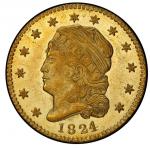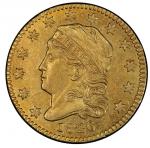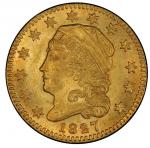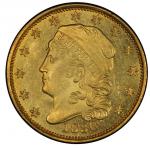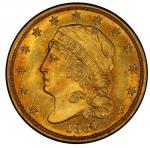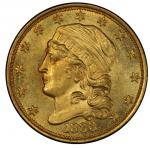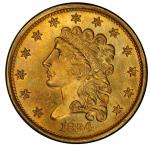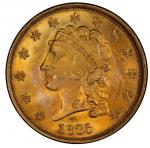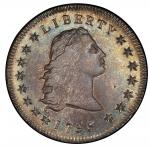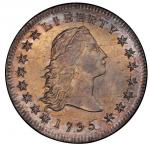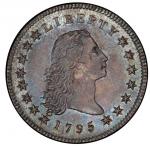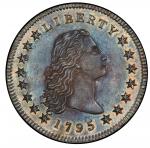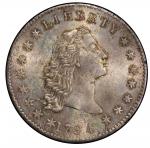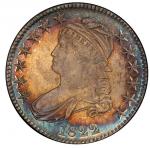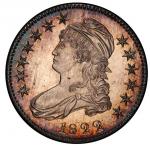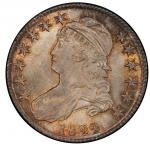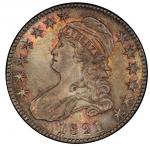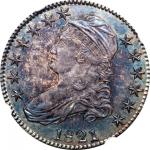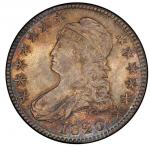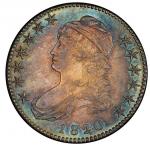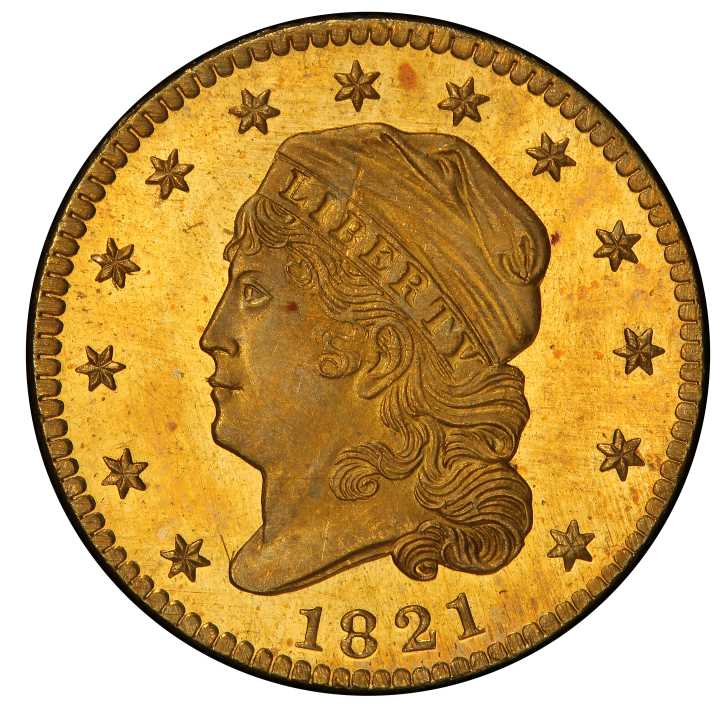Sharp and perfect Proof; extremely rare. -- David Proskey, cataloging this coin for the 1890 Parmelee sale.Called a Proof in the 1982 Eliasberg sale, now certified as the finest circulation strike PCGS has seen of this date, this coin has inspired wonder and conversation for decades. The frosty devices contrast with the mirrored fields on both sides. The deep maize-orange gold color doesnt just suggest originality, it trumpets it, joined by the deepening toning at the rims, the ancient spots here and there, and the warm reflectivity over all fields. The tiny spots are badges of honor, rare among early U.S. gold coins because the surfaces of so many have been altered over time. This one wears its birthmarks proudly, visible between stars 7 and 8, right of Libertys eye, behind the tip of Libertys cap, under M of AMERICA, and elsewhere. Some adjustment marks are seen, including a nearly obliterated vertical line through B of LIBERTY, a batch of horizontal lines at Libertys side curl and ear, and another at star 13. A few wispy lines do not diminish the extraordinary surface quality in the least. The visual appeal is magnificent for a coin of any nation or era, and superlative for a quarter eagle of this type.Powerfully reflective, boldly struck, fully detailed, perfectly preserved, the chance happenstance of a circulation strike coin being so ideally produced and saved approaches the likelihood of a comet strike. Such microscopic probability is one arrow in the quiver of those who would say this coin is a Proof. Another arrow is the look of this coin, which begs the question of how it could be anything other than a Proof. The reeding is sharp and square, more so than typically seen, and the area between the reeds appears bright and polished beyond the standard luster seen in this area on a high grade early quarter eagle. The die state is extremely early, with raised die finish lines visible throughout the fields, to a particularly noticeable degree on the reverse. The area of frost over the top left corner of the shield at the juncture of wing and body diminishes over time, but is in its largest state here. That the rims are not perfectly square is not necessarily damning, as few Proofs of this era have the perfectly squared rims typical of a later period. In its basic aesthetic considerations, this coin passes every test. On more technical merits, the best known hallmark of Proof 1821 quarter eagles is a shallow depression on Libertys jawline, extending beneath her earcurl to her jawline. John Dannreuther points out in Early U.S. Gold Coin Varieties that "the Smithsonian Institution Proof does not have the cheek depression, while some of the circulation and other Proof strikes do have it," remarking that "this seems to indicate a production run between two Proof strikings."In some ways, this coins status as a Proof or circulation strike does not matter. Modern numismatists can never know the intent of the coiner with certainty, and any standards we define today would be foreign to the men who struck this coin. Gem quality, however, stands the test of time and requires no definition. The search for quality that has defined the D. Brent Pogue Collection is embodied by a coin such as this: historic, rare, possessing a world-class provenance, and indubitably the finest of its kind.In the 1982 Eliasberg catalog, this coin was described as "a truly fantastic quarter eagle, one of the foremost highlights of the present collection. No amount of words in print could exaggerate or overdescribe the importance or beauty of this little cameo." The Chapman brothers more economically described this coin 80 years earlier as "brilliant Proof, very rare" in their catalog for the John G. Mills Collection sale, the last time this coin was sold at auction prior to the Eliasberg sale. It brought $37, five dollars more than the Mills 1796 No Stars quarter eagle. Since the 1880s, this coin has been in six collections, each of them famous: Parmelee, Mills, Clapp, Eliasberg, Hayes, and Pogue. The succession of its provenance is unbroken and august. The next name added it to this list joins numismatic royalty.

